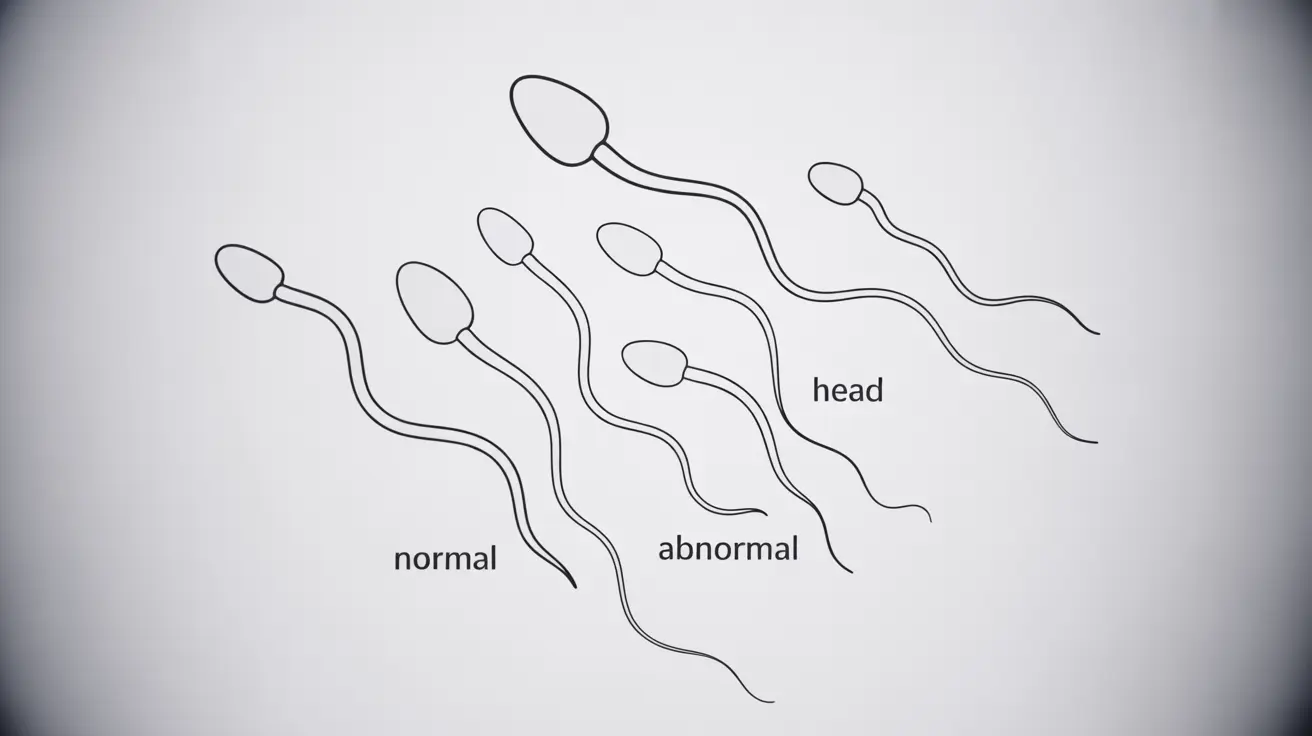Sperm morphology, a critical aspect of male fertility, refers to the size and shape of sperm cells. This important characteristic can significantly impact a man's ability to conceive naturally and provides valuable insights into overall reproductive health. Understanding sperm morphology helps healthcare providers evaluate fertility potential and determine appropriate treatment options when needed.
In this comprehensive guide, we'll explore what sperm morphology means, how it's measured, and its significance in male fertility assessment. We'll also discuss factors that can affect sperm shape and available treatment options for those with morphology concerns.
What Is Sperm Morphology and Its Importance
Sperm morphology examines the physical structure of individual sperm cells, including the head, midpiece, and tail. A normal sperm cell should have an oval-shaped head with a smooth surface, a well-defined acrosome (cap-like structure), a uniform midpiece, and a single straight tail.
The shape of sperm cells is crucial because it affects their ability to:
- Navigate through the female reproductive tract
- Penetrate the egg's outer layer
- Successfully fertilize the egg
- Deliver genetic material properly
How Sperm Morphology Is Assessed
Healthcare providers evaluate sperm morphology through a specialized semen analysis test. This examination involves:
Sample Collection and Processing
- Fresh semen sample collection in a sterile container
- Laboratory preparation and staining of the sample
- Microscopic examination by trained specialists
Evaluation Criteria
Specialists assess multiple aspects of sperm structure, including:
- Head shape and size
- Midpiece formation
- Tail length and straightness
- Overall proportions and symmetry
Normal vs. Abnormal Morphology
According to current World Health Organization (WHO) guidelines, a normal semen sample should contain at least 4% morphologically normal sperm. This seemingly low percentage is actually typical, as most men naturally produce some abnormally shaped sperm.
Common Morphological Abnormalities
Abnormal features may include:
- Irregular head shapes
- Multiple heads or tails
- Coiled or bent tails
- Absent or irregular midpiece
- Cytoplasmic droplets
Factors Affecting Sperm Morphology
Several factors can influence sperm shape and development:
Lifestyle Factors
- Smoking and alcohol consumption
- Exposure to environmental toxins
- Poor nutrition
- Elevated testicular temperature
- Chronic stress
Medical Conditions
- Varicocele
- Hormonal imbalances
- Genetic factors
- Infections
- Certain medications
Treatment Options and Lifestyle Changes
Improving sperm morphology often involves a combination of medical interventions and lifestyle modifications:
Medical Treatments
- Treatment of underlying conditions
- Hormonal therapy when appropriate
- Surgical correction of varicocele
- Antioxidant supplementation
Lifestyle Modifications
- Maintaining a healthy weight
- Following a balanced diet rich in antioxidants
- Regular exercise
- Stress management
- Avoiding harmful substances
Frequently Asked Questions
What is sperm morphology and why does it matter for male fertility? Sperm morphology refers to the size and shape of sperm cells. It matters because proper sperm shape is essential for successful fertilization, as normally shaped sperm are better equipped to reach and penetrate the egg.
How is sperm morphology tested and what do the results mean? Sperm morphology is tested through detailed semen analysis under a microscope. Results indicate the percentage of normally shaped sperm, with 4% or higher considered within normal range according to WHO guidelines.
What percentage of normal sperm morphology is considered healthy for fertility? A normal sperm morphology result of 4% or higher is considered healthy for fertility. However, successful conception can still occur with lower percentages, especially when other semen parameters are normal.
Can abnormal sperm morphology prevent natural conception or cause infertility? While abnormal sperm morphology can make conception more challenging, it doesn't necessarily prevent natural conception. Many men with low morphology scores still achieve pregnancy naturally, especially if other semen parameters are normal.
What factors can cause abnormal sperm morphology and can it be treated? Abnormal sperm morphology can be caused by lifestyle factors (smoking, alcohol, poor diet), medical conditions (varicocele, hormonal issues), and environmental exposures. Treatment options include lifestyle changes, medical interventions, and addressing underlying health conditions.




